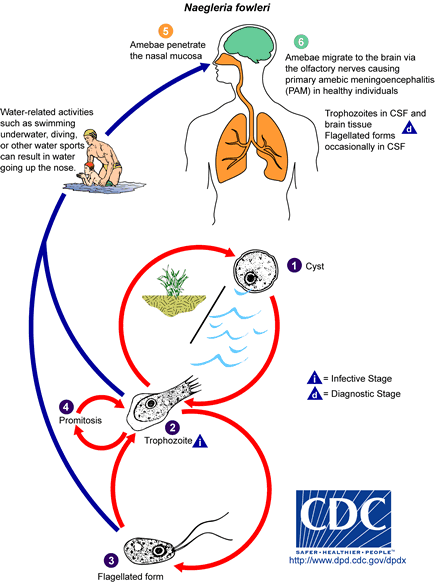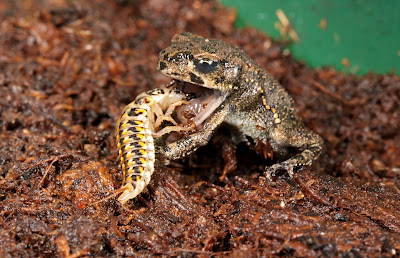 |
| Drosophila melanogaster. Photo credit: Wikipedia. |
We have all heard about the possible health benefits of consuming red wine in moderation. An Emory University research team recently discovered that alcohol consumption also imparts benefits for another group of animals...fruit flies! In many households these little insects are viewed as a pesky nuisance, yet even fruit flies have their own pests: parasitoid wasps.
 |
| The parasitoid wasp Leptopilinia boulardi. Photo credit: www.scitechdaily.com |
What is a fruit fly to do? There are no urgent care clinics, but they do have a sort of "fly pharmacy" on hand. Fruit flies frequently dine on bacteria and yeast found in rotting fruit, and this meal is often accompanied by booze, ethanol to be exact. While the ethanol is a waste product of sugar-consuming yeasts, Dr. Todd Schlenke and his colleagues suspected that it could be a potent anti-parasite medication for fruit flies.
Schlenke and his team performed a series of experiments to test their hypothesis. They used Drosophila melanogaster (fruit fly host) and two different species of parasitoid wasp: Leptopilina heterotoma (generalist parasite of many Drosophila species) and Leptopilina boulardi (specialist parasite of Drosophila melanogaster). First, the wasps were allowed to attack fly hosts from two different groups: larvae fed a non-alcoholic diet and larvae fed a six percent ethanol diet. Larvae reared on the ethanol diet harbored significantly fewer wasp eggs that did non-alcoholic larvae.
Next, the wasps were allowed to attack fly hosts from both groups to determine how host diet influenced wasp development. Wasps developing in alcohol free larvae thrived while over 60 percent of wasps in the ethanol flies died. Further, the internal organs of the less fortunate wasps had shot out of their anuses: what a way to go.
 |
| Infected fly larvae. Photo credit: www.scitechdaily.com |
Another cool aspect of their study was that the wasp species responded to the ethanol in different yet predictable ways. The generalist wasps were much harder hit by the alcohol, while the wasp specialists were more resistant. This is what we would expect given what we know about host-parasite coevolution; the generalists can go on to infect a wide range of hosts, while the specialists are much more restricted, thus there is stronger pressure on them to circumvent this anti-parasite strategy.
While we know that wild animals self-medicate when exposed to pathogens, this is the first study to demonstrate the use of alcohol as a medicine in wild animals. Since alcohol can be found in many natural habitats it is possible that other animals also use it to treat their infections. Lastly, more work is needed to determine if that glass of wine is also helping us to reduce our parasite loads!
Find out more about the flies, the wasps, and about anti-parasite behavior:
Neil F. Milan, Balint Z. Kacsoh, and Todd A. Schlenke. 2012. Alcohol consumption as self-medication against blood-borne parasites in the fruit fly. Current Biology 22: 488-493.
http://dx.doi.org/10.1016/j.cub.2012.01.045
Brian Gray, Anne C. Jacobs, Adrienne B. Mora, and Marlene Zuk. 2012. Anti-parasite behavior. Current Biology 22: R255-R257.









